Is Iceland Safe For Solo Female Travellers? An Honest Guide
Let’s get straight to it – is Iceland safe for solo female travellers?
My short answer is a definite yes, but like anywhere, there are definitely things you’ll want to know before you travel.
During my own solo trip to Iceland, I walked through Reykjavík at 3am, joined full-day tours to wild beaches, swam in the Blue Lagoon alone, and so much more!
But even though I felt very safe in Iceland, I also know that certain safety worries will always creep in when you’re planning your dream trip…
Maybe you’re worried about crime, or about being out in the middle of nowhere on your own, or maybe you just want to know if you’ll actually feel safe when you’re there.
Well, that and more is exactly what this Iceland safety guide will share (no sugarcoating or scaremongering here, I promise!)
And by the end, you’ll know what’s genuinely safe, what to watch out for (spoiler: nature is the real risk here), and tips to make solo travel in Iceland so much easier!
Disclaimer: Some of the links on this blog are affiliate links. That means if you click on one and make a purchase, I may earn a small commission – at no extra cost to you. I only recommend products, places and services I genuinely love and use on my own solo travels. Thank you for supporting my adventures so I can continue to provide free content on this blog! 💛
Is Iceland Safe for Solo Female Travellers?
Yes, Iceland is widely considered to be one of the safest countries in the world! And this definitely tallies with my own solo female travel experience in Iceland, too.
For the most part, you’ll feel completely comfortable exploring this beautiful, dramatic country alone as a woman.
Iceland sits at #1 on the Global Peace Index, violent crime is extremely rare, and Reykjavík (Iceland’s capital) has a very different vibe from most capital cities.
But it’s important to say that safe doesn’t mean risk-free.
Most tourists get into trouble in Iceland because of nature, rather than crime.
Iceland is famous for unpredictable winter storms, icy pavements, sneaker waves at Reynisfjara beach that have pulled tourists out to sea, and tourists underestimating how fast the weather can change on a hike.
Being aware of those natural risks and planning for them matters far more than worrying about crime in Iceland.
Katie’s Top Tip: Treat nature as your biggest safety concern in Iceland. Download the SafeTravel app, always check weather and road conditions before heading out alone, and never underestimate how quickly conditions can turn (even in summer).
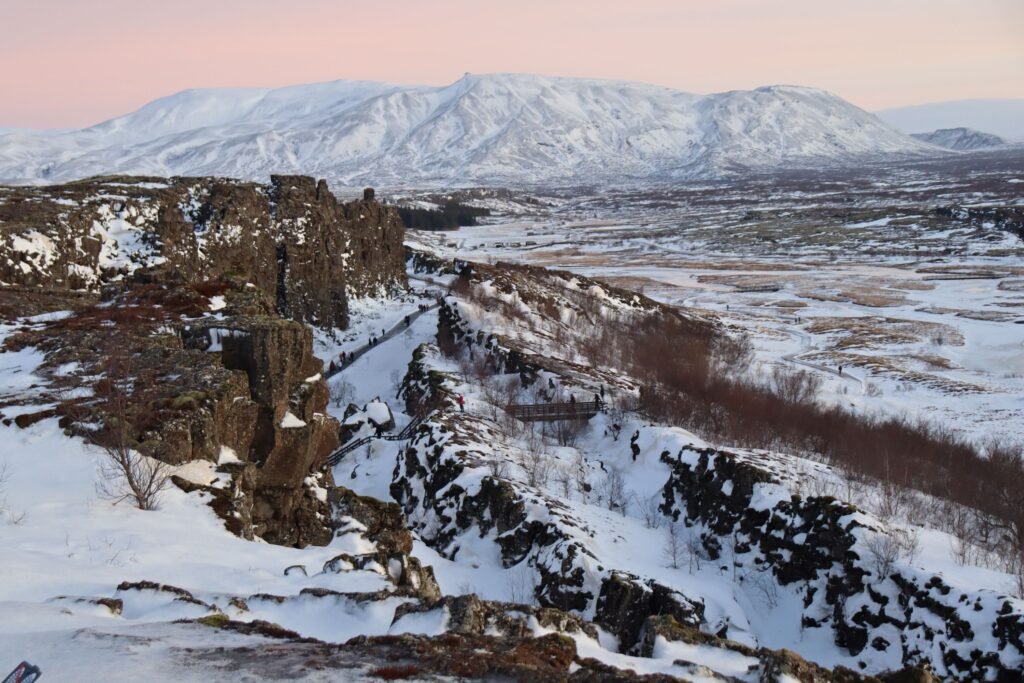
Understanding Iceland’s Culture
The thing that makes Iceland feel so safe is its culture.
Even though Iceland is a country, it is a small, tight-knit society of just under 400,000 people, and locals here genuinely look out for one another.
Trust underpins all aspects of culture and society here.
Now don’t get me wrong, that definitely doesn’t mean you can throw all of your normal solo female travel precautions out of the window here, but it does mean you can be more relaxed compared to many other European countries.
Icelanders also have a strong respect for nature and rules.
So, for example, when you see a sign telling you not to cross a barrier or drive any further, it’s because it’s necessary, and you should do what it’s telling you.
As a solo female traveller, you’ll blend in in Iceland, only if you are respectful – both of local people and of nature.
Katie’s Top Tip: Want to connect with locals? Icelanders aren’t big on small talk, but they are incredibly warm once you break the ice! A simple “takk” (thank you) goes a long way.
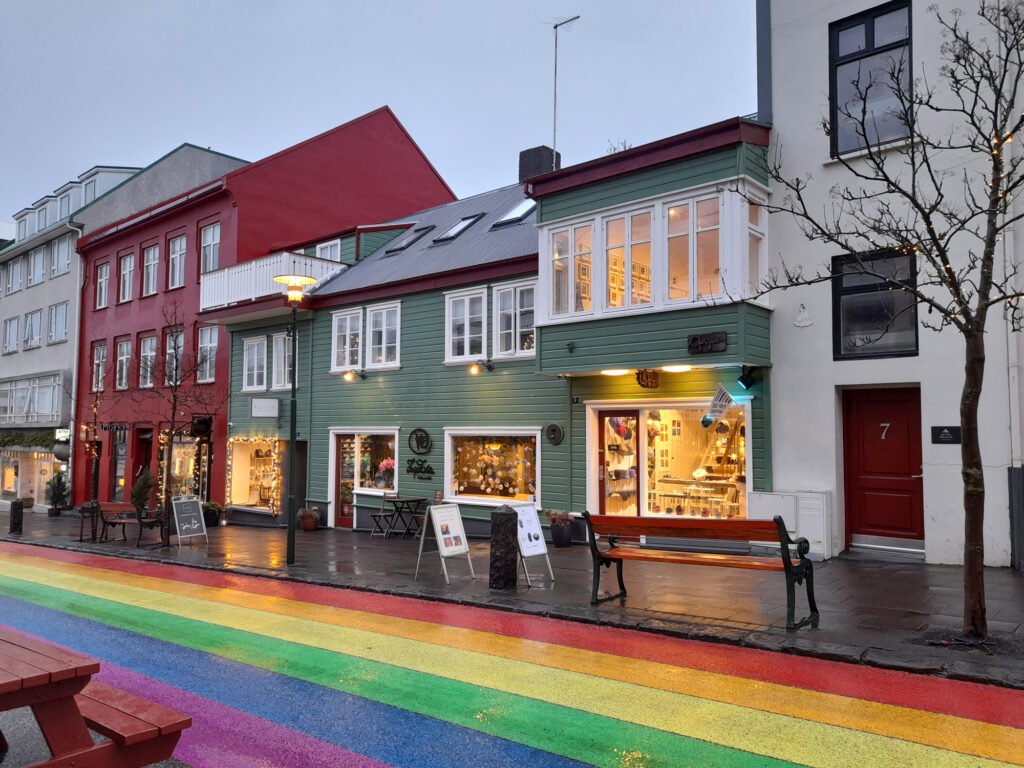
Attitudes Towards Women in Iceland
If there’s one place in the world where you’ll feel respected as a woman, it’s Iceland!
Iceland has ranked #1 in the World Economic Forum’s Global Gender Gap Report for more than a decade, and this is demonstrated in everyday life.
As a solo female traveller in Iceland, I didn’t feel like I stood out for eating out or walking alone – even at 3am! I also didn’t experience any unwanted attention or stares just for being alone.
Catcalling and street harassment are also rare here compared to many European cities.
Don’t get me wrong, that doesn’t mean it’s never experienced. But perpetrators are usually tourists rather than locals, and most incidents are reported at night, especially around alcohol.
I found it so incredibly refreshing to feel like just another traveller during my time in Iceland, without my solo female traveller status defining how people acted towards me. That’s sadly very rare in Europe.
Katie’s Top Tip: If you’re out enjoying Reykjavík’s nightlife and someone makes you feel uncomfortable, don’t hesitate to tell staff. It’s culturally normal to speak up for yourself in Iceland.

How to Dress in Iceland
When it comes to safety in Iceland, your wardrobe can actually make or break your trip, like nowhere else in Europe.
In Iceland, forget about fashion or even dressing to be respectful, as this is a country where dressing wrong can actually put you at risk.
The weather here changes in minutes, even in summer.
During my trip, I had countless times where there was sunshine in one moment and then driving rain or snow in the next.
So your 3 biggest priorities for dressing in Iceland should be:
- Layers (a merino wool base layer, a jumper and a coat should be your minimum, especially in winter)
- Good quality waterproofs (a waterproof, insulated coat and waterproof trousers)
- Comfortable shoes with serious grip
Nope, it’s not glamorous or sexy! But it will keep you safe.
Even in summer, you should still pack layers, grippy shoes, waterproofs and a good coat.
Hypothermia is a real risk if you get wet and cold while hiking, and icy pavements in winter cause countless tourist injuries every year.
Katie’s Top Tip: In winter, pack detachable spikes (crampons) for your boots. They take up almost no space in your luggage, cost under £20 and can save you from a broken wrist (or worse) on Reykjavík’s famously icy pavements.
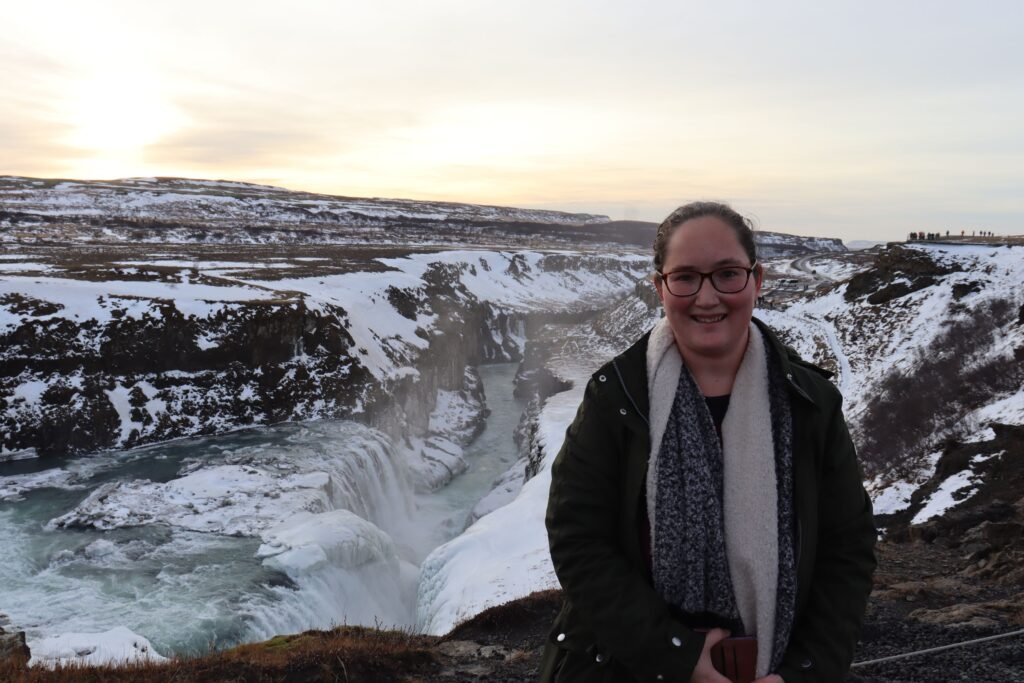
Iceland Crime Rates
Now, let’s talk numbers.
According to Numbeo, Iceland scores very low for overall crime. And to put that into perspective: worries about being mugged sit at very low levels, and walking alone at night scores a high safety rating.
Data from Statista also backs this up, showing that Iceland has one of the lowest murder rates in Europe (only two recorded in 2021, for example).
And this is a big part of why Iceland consistently ranks at the very top of the global safety index.
While violent crime is rare, Iceland does have relatively high rates of sexual violence, compared to other European countries.
However, experts say this reflects a stronger trust in the justice system in Iceland and lower stigma around reporting, rather than higher danger levels.
It’s also helpful to know that most crime occurs in the capital, Reykjavík, simply because that’s where most people live.
Katie’s Top Tip: Don’t let the low crime stats drop your guard too far. You should still treat Reykjavík the same way you’d treat any other city centre, watching your bag in crowded spaces, being sensible with where you leave your belongings, and remaining aware of your surroundings.
Risk of Theft in Iceland
When asking “is Iceland safe for tourists?”, theft is usually the first concern. Right?
Well, theft, of course, exists in Iceland, but the good news is that it’s a lot less common here than in most European capitals.
Numbeo puts the overall level of crime at low, with worries about being mugged rated as very low, worries about things being stolen from cars rated as low, and worries about armed robbery also ranking low.
Most incidents of theft that do occur in Iceland are petty, for example, from an unlocked car, or valuables left unattended.
Katie’s Top Tip: It’s ok to treat Iceland like it’s safe, but don’t let your guard down completely. I always keep my valuables in a small crossbody bag and stash anything I don’t need for the day in a hotel safe (if I have one). And if you’re road-tripping in Iceland, make sure you don’t leave valuables in your car unattended.

Risk of Terrorism in Iceland
There’s no recent history of terrorism in Iceland, and it consistently ranks at the top of the Global Peace Index.
In my personal experience, I definitely felt very relaxed and safe exploring Iceland alone.
Plus, police officers don’t even carry guns here, which says an awful lot about how safe Iceland is compared to most places in Europe.
But no country is 100% risk-free, especially at the moment, in these unstable times.
In terms of numbers, the National Commissioner of the Icelandic Police monitors threats annually, and in 2025, the risk sits at 3 out of 5.
Katie’s Top Tip: To reassure yourself further, sign up for travel alerts from your government before your trip.
Risk of Violent Crime in Iceland
Iceland’s crime rates for violent crime are some of the lowest in the world.
Numbeo puts worries about being attacked at very low, and worries about being attacked for gender, ethnicity or religion are very low too. Police don’t carry guns and in 2021, there were just 142 people in prison.
But, like anywhere, violent crime isn’t nonexistent.
Reykjavík has seen the occasional scary headline, for example, after a gang-related murder in 2021, that should remind you that Iceland (even though it’s one of the safest countries in the world), isn’t immune to crime.
The most common cases of assaults are linked to nightlife or alcohol, and this usually involves tourists rather than locals. But even this is rare compared to most countries.
Katie’s Top Tip: Even though Iceland is relatively safe for solo female travellers, you should still be street smart. Things like sticking to well-lit streets at night and trusting your instincts if someone/something feels off…
Risk of Harassment in Iceland
One of the most common questions I get is whether women experience street harassment in Iceland.
And honestly? It’s (refreshingly!) rare.
When I first visited Reykjavík solo, I felt very unnoticed. No one paid me any unwanted attention (catcalls, stares, comments, whistles…) just because I was a woman exploring alone.
But I promised you in the intro that I’d keep this balanced. So, it’s important to know that while harassment is low, Iceland does have higher reported rates of sexual violence than many European countries.
However, experts believe this is because people in Iceland have stronger levels of trust in the justice system, and there is also less stigma around reporting.
So this stat doesn’t necessarily mean there is a higher danger.
Katie’s Top Tip: As I’ve said before, harassment is most likely to occur in nightlife settings and around alcohol. To keep yourself safe, exercise common sense like pre-planning a safe route home, telling loved ones where you’re going, and letting bar staff know immediately if someone makes you feel uncomfortable.
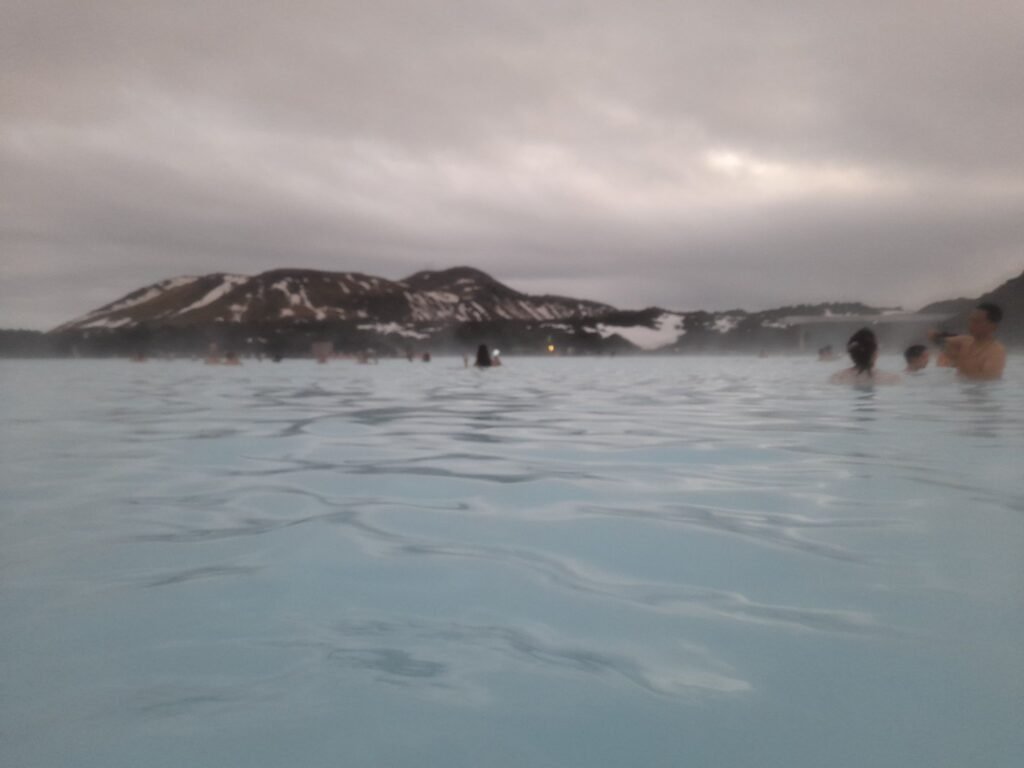
Risk of Pickpocketing in Iceland
If you’ve ever solo travelled to popular European cities like Dubrovnik or Rome, you’ll know how important it is to keep your belongings in a secure crossbody and continue to check them in busy areas.
Well, good news, because Iceland is the opposite of this!
Pickpocketing is not a widespread problem in Iceland, even in busy areas. And Numbeo’s data backs this up, too, with worries about being mugged or robbed rated very low.
However, Iceland’s growing popularity means opportunistic theft can and does happen.
Crowded bars, the bus to Keflavík airport or popular Golden Circle tour stops are where you’ll need to be most aware of pickpocketing in Iceland.
Katie’s Top Tip: Despite the lower risk, I still always carry a small zipped crossbody bag for city days and a secure rucksack for tours. I also never leave valuables unattended or on tables when dining outside.

Risk of Scams in Iceland + Common Scams to Watch Out For
Compared to other European cities, scams in Iceland are basically unheard of.
You won’t find street sellers, petition scams or fake taxi drivers waiting at the airport here!
Iceland’s small population and high level of trust mean scams just aren’t part of the everyday culture.
But the one “scam” you will probably run into is overpaying.
Tours, food and souvenirs can be extremely expensive in Iceland, and some companies take advantage of tourists not knowing what’s normal.
As one example, in souvenir shops, I’ve seen countless tourists paying insane amounts for bottled water with a mountain on the label – when tap water here is literally some of the cleanest in the world!
Another common issue in Iceland is taxi fares.
They are notoriously very expensive, and some drivers have been reported to skip the meter or take longer routes.
To avoid this, stick to official taxi companies with good reviews, or better yet, use the amazing Flybus or public transport system when you can.
Katie’s Top Tip: Don’t stress about scams in Iceland, but make sure you watch your budget. Bring a reusable water bottle (you’ll save a fortune!), and always book tours through reputable companies instead of random resellers.
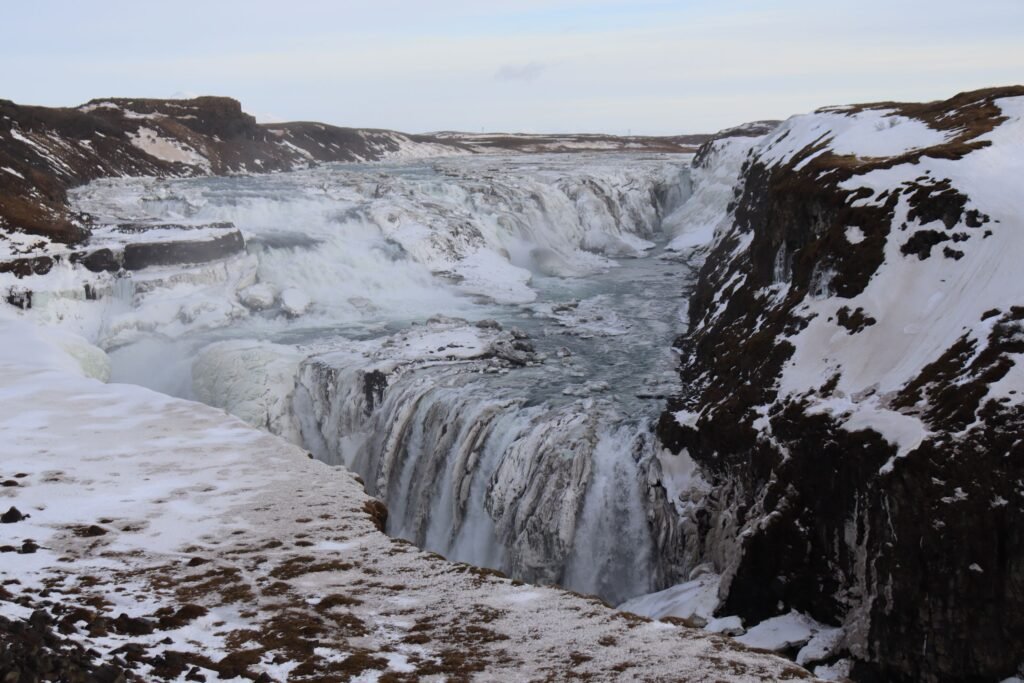
Iceland Emergency Number
If you have an emergency in Iceland, the number you need is 112.
This connects you to police, fire and ambulance, just like 911 in the US or 999 in the UK.
English is widely spoken by operators, so you don’t need to worry about language barriers.
Katie’s Top Tip: If you’re planning on hiking, you can download the 112 Iceland app, which lets you share your location with search and rescue teams even if you’re out of phone service. Conditions can change so fast here, so this is an invaluable tool.
The Safest Places to Visit in Iceland
If you’re wondering “is Iceland safe for solo female travellers?”, you should know by now that my answer is yes! But some areas definitely feel extra safe.
Reykjavík is the obvious starting point. Despite being Iceland’s capital, its crime rate is low, walking around downtown during the day feels calm and very easy, and even at night, I felt totally comfortable alone.
Outside of Reykjavík, the Golden Circle (Þingvellir, Gullfoss) is very touristy but also very safe.
Akureyri in the north is another great hub to stay in Iceland. It’s a lot more underrated than Reykjavík, with a cosy feel and easy access to nature.
The countryside and remote villages in Iceland will definitely feel more isolated and local, but crime here is practically non-existent. So this is more about feeling comfortable, rather than safety.
As I keep saying, the real risk anywhere in Iceland doesn’t come from people, but from nature.
Slippery waterfalls, black sand beaches with dangerous sneaker waves, and icy winter roads/pavements are all things to respect and be cautious of.
Katie’s Top Tip: In Reykjavík, the central neighbourhoods of Laugavegur and Austurstræti are my favourite, as they are lively but feel very safe.
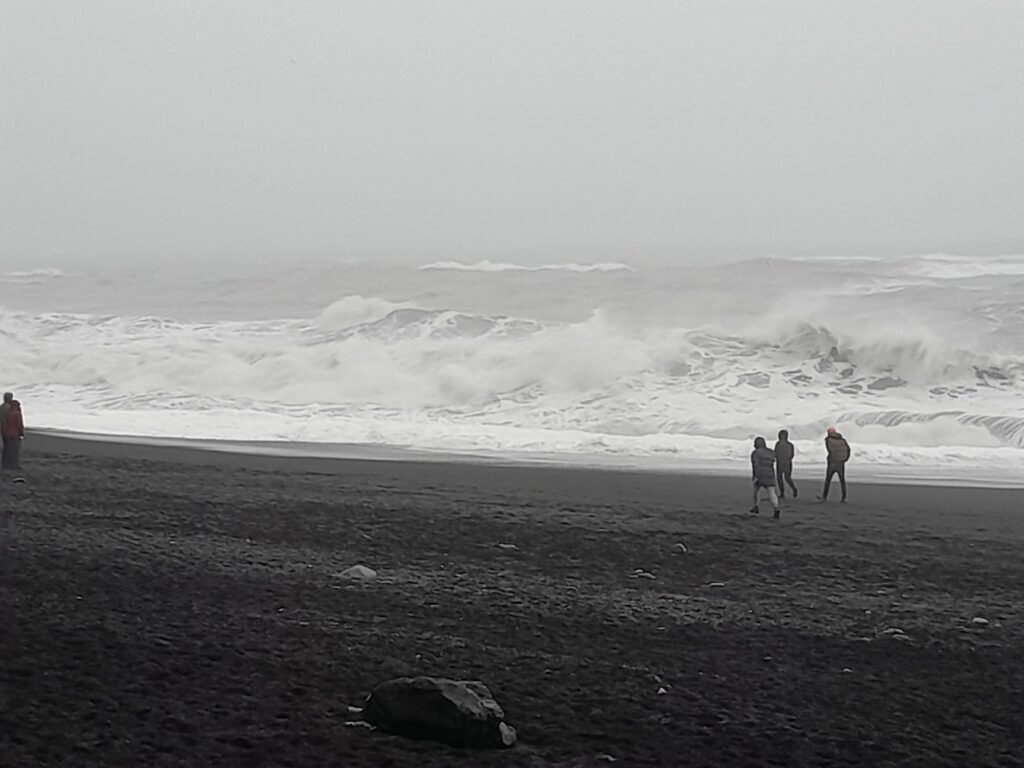
Places to Avoid in Iceland
There really aren’t any unsafe areas in Iceland in the way you might think of in other countries. Even Reykjavík’s nightlife district has a lower crime rate than many European capitals.
However, there are a few places and situations I’d personally avoid (or be cautious around) as a solo female traveller:
Downtown Reykjavík late on the weekends can get rowdy, and alcohol-related incidents are most common here.
I’d also be careful in poorly lit industrial areas outside the city centre, as they feel isolated after dark. But chances are you’d be staying in the centre of Reykjavík anyway, as this is where most hotels are.
Beyond this, the biggest places to be cautious around in Iceland aren’t neighbourhoods but natural hazards:
- Reynisfjara beach (with its infamous sneaker waves)
- Unstable, icy glacier edges
- Closed hiking trails (or any hiking trails when poor weather is forecast)
Katie’s Top Tip: Please, please respect warning signs at beaches, cliffs, glaciers and other natural sights. Locals don’t put them up for fun, they’re there to keep you safe.
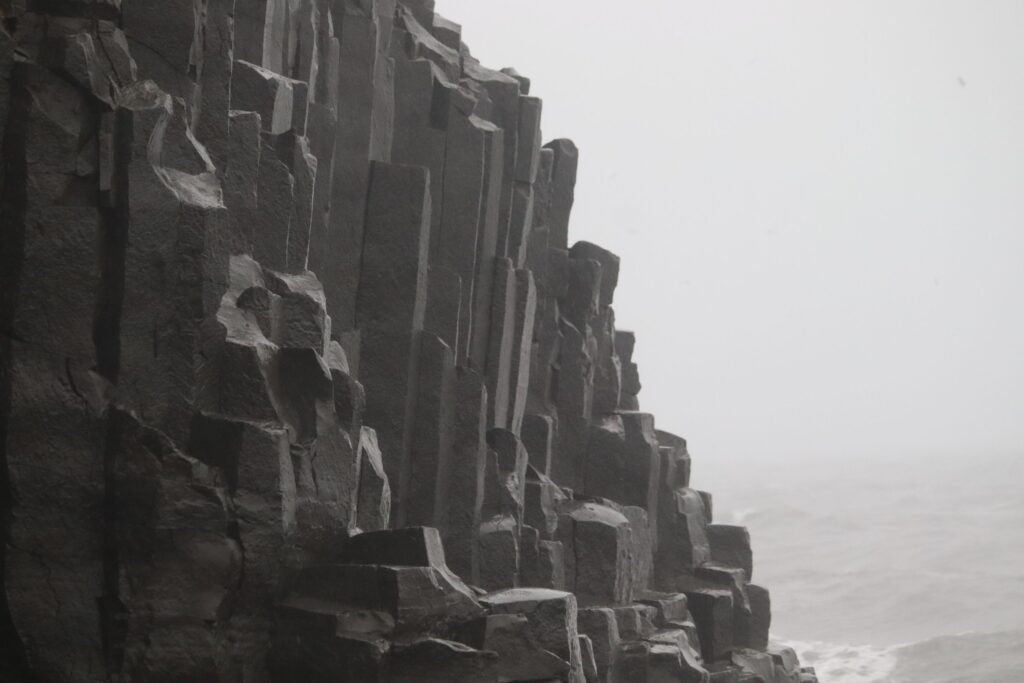
Is Iceland Safe at Night?
In my experience, Iceland feels incredibly safe at night. I walked back to my hotel alone through Reykjavík city centre, at 3am, after a Northern Lights tour – and never felt uncomfortable.
And the numbers back this up, too. According to Numbeo, safety walking alone at night in Iceland is rated high.
Street lighting is also good in the capital, and there are usually always people around, even on weeknights, thanks to Northern Lights tours coming back at all hours.
But, like anywhere, context matters.
Reykjavík at the weekend is a lot more lively, and while violent crime is rare, when alcohol is involved, behaviour is always more unpredictable.
Outside the city centre, nights (and afternoons in winter) feel very dark, and streets empty out quickly. It’s still safe, but if you’re not used to being alone in such quiet surroundings, you may feel uncomfortable.
Katie’s Top Tip: If you want to experience Iceland at night but don’t fancy exploring alone, join a group bar crawl or guided Northern Lights tour. You’ll meet people and feel safe – win win!
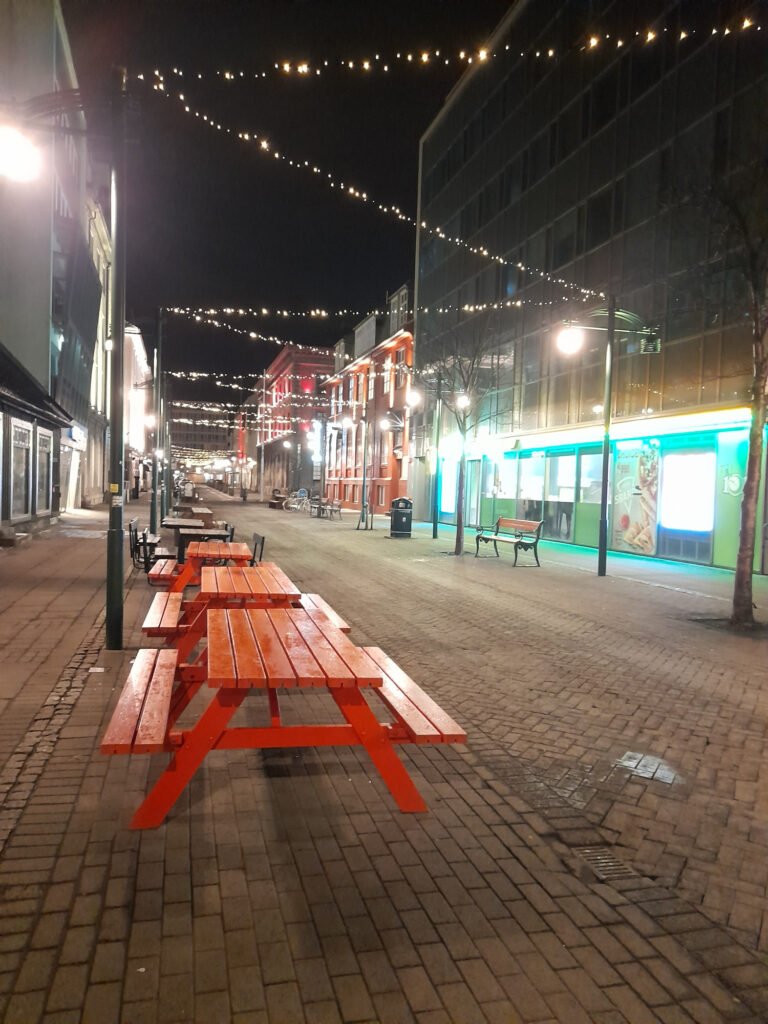
Nightlife in Iceland
Iceland isn’t known for being a party hub, but Reykjavík’s city centre, especially around Laugavegur and Austurstræti, stays lively well into the night.
One quirky thing to know is that locals in Iceland will pre-drink at home because alcohol is super expensive, then hit the bars later. So don’t be surprised if things feel quiet until late!
If you don’t want to go to bars, you can still experience nightlife in Iceland through live music venues, local restaurants, or even midnight walks under the Midnight Sun (yes, it stays light all night in June!)
Katie’s Top Tip: If you plan on enjoying Reykjavík’s nightlife, stick to well-lit main streets, keep your belongings close, always keep an eye on your drink, and consider joining an organised bar crawl tour.
Safest Time of Year to Visit Iceland
Iceland is safe to visit all year round, but your experience will look entirely different depending on the season.
Summer (June–August) is the easiest time to visit Iceland for solo female travellers. The weather is milder, the daylight is endless, and roads and hiking trails are a lot more accessible. You also won’t have to deal with the pitch-black afternoons of winter, so there’s more time to explore.
Winter, on the other hand, can be magical (northern lights, fewer tourists!), but it definitely comes with challenges. Driving conditions can be dangerous, weather can be unpredictable, and daylight hours are as little as 4–5 hours in December. You’ll need to plan carefully and be flexible with the weather if you visit Iceland in winter.
Katie’s Top Tip: If it’s your first solo trip to Iceland, I’d suggest summer or, if you want to see the Northern Lights, mid-spring or mid-autumn. That way, you’ll still see all of Iceland’s highlights, but you’ll have way less stress about safety and logistics.
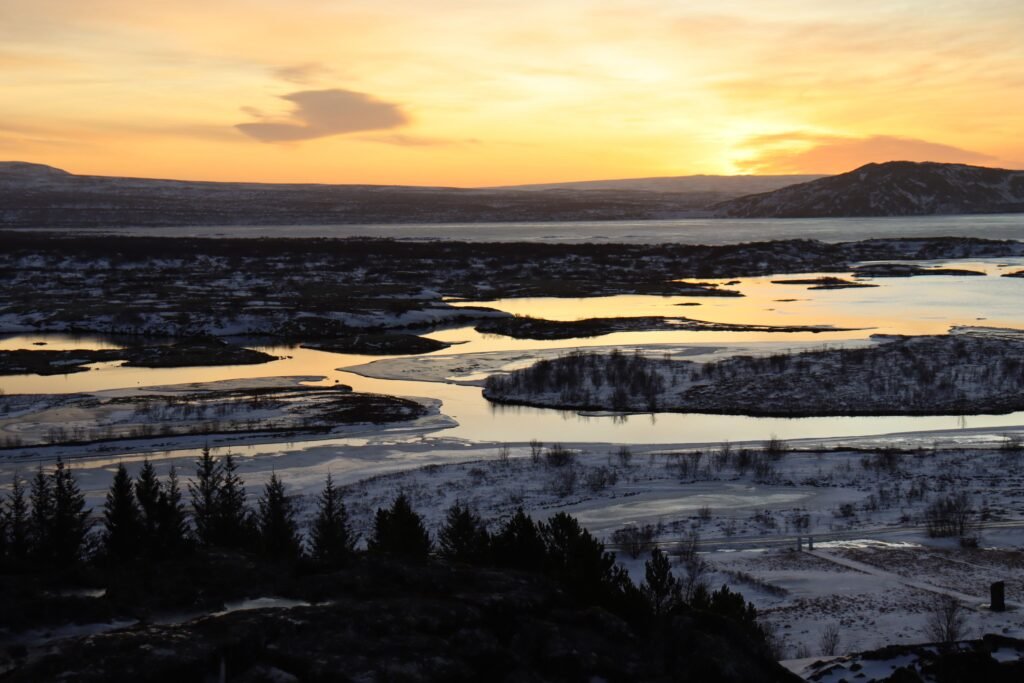
Is English Spoken in Iceland?
Yes! Almost everyone in Iceland speaks excellent English, often fluently.
English is taught in schools from a young age, and Iceland also has an incredibly strong tourism industry, so you’ll rarely struggle to be understood.
In Reykjavík, you will be able to navigate everything, from ordering food to booking tours, entirely in English without a problem.
In more rural areas, you’ll encounter people who prefer Icelandic, but even then, they will more than likely know enough English to help you out if needed.
For me as a solo female traveller, this made a huge difference to how safe and comfortable I felt during my trip!
Katie’s Top Tip: Learning a few Icelandic basics (like takk for thank you) is appreciated, but you won’t face any language barriers here.
Is Public Transport Safe and Reliable in Iceland?
Public transport in Iceland is safe, but limited.
Reykjavík has a decent bus system (Strætó), which is clean, reliable and feels very safe, even at night.
Outside the capital, though, public transport gets a lot trickier. Long-distance buses do exist but run on limited schedules (that can be affected or stopped altogether in winter), and many popular tourist sites aren’t connected by public transport at all.
Many visitors to Iceland end up renting a car because of this. Driving gives you the greatest freedom, but in winter, especially, it can be dangerous with icy roads, high winds and sudden storms. So make sure you’re a confident driver.
If you’re not confident driving yourself, guided tours are a much safer option – plus you get the benefit of exploring with a knowledgeable, passionate guide. I booked tours for all of my Iceland day trips and had the best time!
Taxis are also very safe in Iceland, but are incredibly pricey. Reykjavík is very walkable if you stay in the city centre, and I recommend getting the Flybus to and from the airport instead.
Katie’s Top Tip: If you’re nervous about driving but still want to see the sights outside Reykjavík, book small-group tours. They’re safe, sociable, and you won’t have to stress about navigating Iceland’s icy roads!
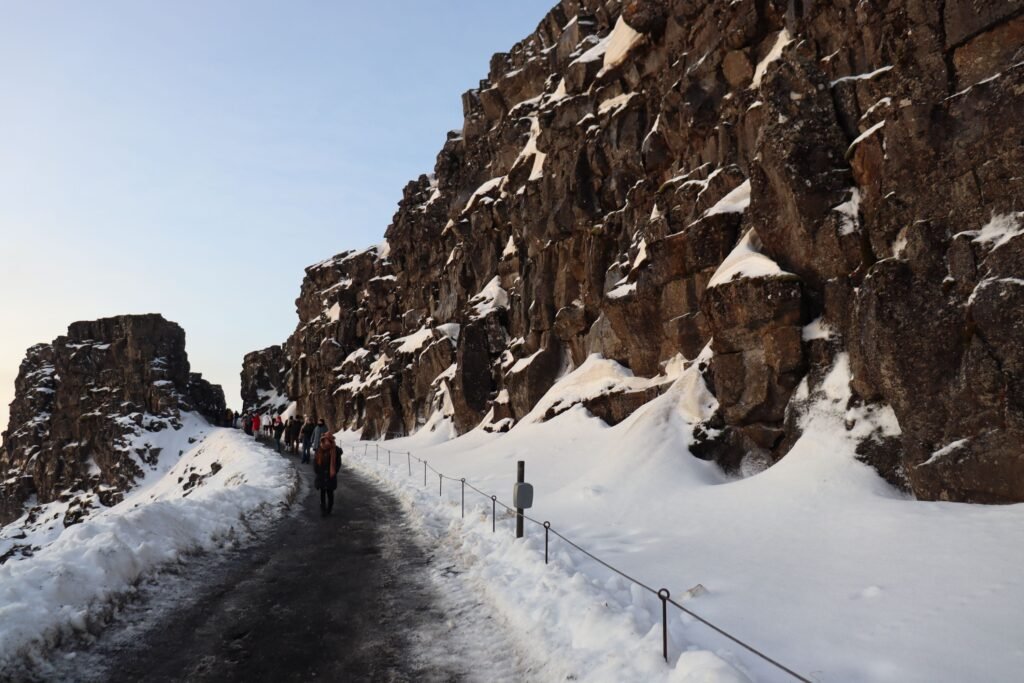
Natural Dangers in Iceland
As I’ve said throughout this guide, the biggest safety risks in Iceland don’t come from people, but from nature.
Iceland is very geologically active, with volcanoes, earthquakes, geysers and geothermal hot springs.
Tourists often underestimate the dangers of venturing too close to icy waterfalls or boiling hot springs or ignore warning signs at unstable cliffs and glaciers.
Beaches like Reynisfjara near Vík are especially notorious, as the “sneaker waves” there are powerful enough to drag people out to sea in seconds. I would always visit with an experienced guide and stay far back from the sea.
The weather is another serious safety concern in Iceland.
Icelandic storms can hit fast, with gale-force winds making it unsafe to drive or even walk. In winter, icy roads and limited daylight add to the risks.
The Icelandic Association for Search and Rescue is one of the most respected in the world, but no one wants to end up relying on them. Right?
Please respect all warning signs, check road.is for conditions BEFORE you travel, and never, ever take unnecessary risks for the sake of a photo.
Katie’s Top Tip: Bookmark two sites before you travel: road.is (for road conditions) and safetravel.is (for weather alerts). Both are run by Icelandic authorities and updated in real time.
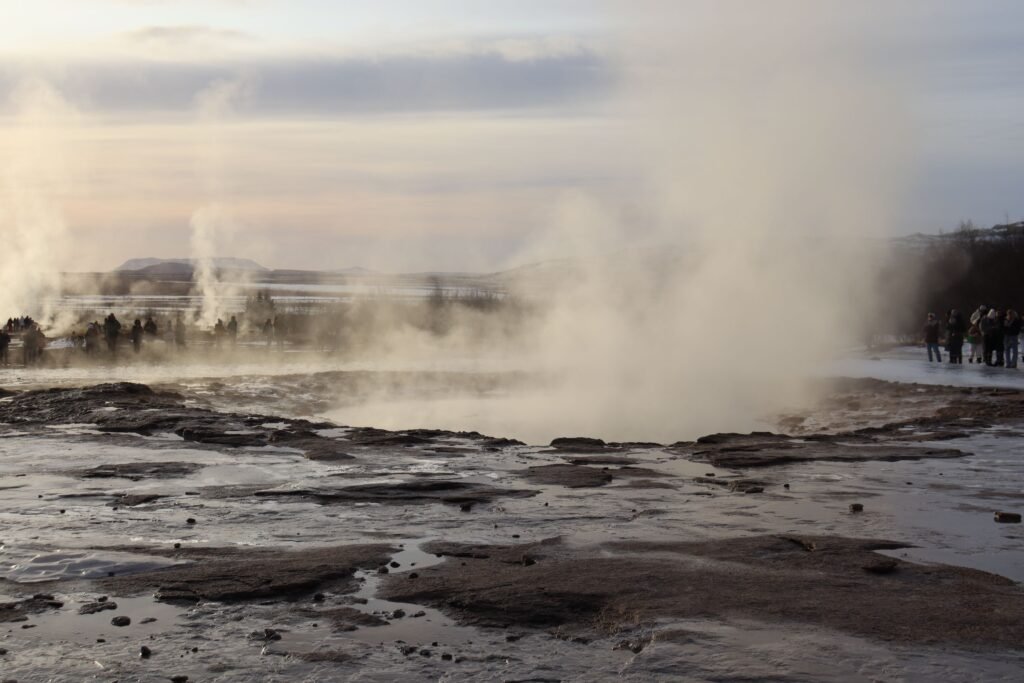
Top Solo Female Travel Safety Tips for Iceland
Iceland is one of the safest countries in the world, but that doesn’t mean you can abandon all of your solo travel safety habits.
Here are my best Iceland safety tips to keep your trip safe:
- Stay alert in Reykjavík at night. Crime is rare, but petty theft and alcohol-fueled incidents do happen. So keep your drink in sight, watch your bag and stick to well-lit streets when walking home.
- Keep a safe distance from nature. Don’t turn your back on Reynisfjara’s waves, never ignore or climb safety barriers, and only explore glaciers, ice caves or volcano areas with a guide.
- Check conditions before driving. Visit road.is daily, pay extra to rent a 4×4 in winter, and avoid driving in storms or darkness if you’re not confident. Plus, always keep extra food, water, blankets and a first aid kit in the car.
- Dress and pack for sudden weather. Carry layers, waterproofs and a hat (even on sunny days). In winter, wear crampons (even in the city centre) to avoid a nasty fall.
- Trust your instincts at night. Iceland is safe after dark, but if a street or situation feels off, leave quickly and take a taxi instead, or duck into a restaurant or bar for help.
- Book tours for remote trips. Join guided volcano hikes, glacier walks or Northern Lights trips instead of navigating alone. This way, you’ll stay safe and meet other travellers along the way!
- Stay connected. Share your itinerary with someone you trust, download offline maps before heading out, and always carry a fully charged power bank. In rural Iceland, phone signal isn’t guaranteed, so make sure you prepare for that too.
Katie’s Top Tip: Don’t just pack for the weather you expect, pack for the weather you don’t expect.

Final Thoughts: So, Is Iceland Safe for Solo Female Travellers?
So, is Iceland safe for solo female travellers? In my own experience (and backed up by the stats from Numbeo, the GPI and Statista), the answer is yes!
Iceland consistently ranks number one on the Global Peace Index, violent crime is rare, and walking alone at night is considered to be safe. Plus, the local police don’t even carry guns, which tells you a lot about how safe Iceland is to visit.
But a high level of safety doesn’t mean that visiting Iceland is risk-free.
Nature is powerful here, and underestimating it is the biggest danger of visiting Iceland.
Here’s the bottom line: Iceland is one of the safest countries in the world, but the same common sense applies no matter where in the world you are…
Respect the weather, don’t push your limits outdoors, follow all safety instructions, stay alert when enjoying Reykjavík’s nightlife, and always trust your gut if something feels off.
If you do that, you’ll definitely find that solo travel in Iceland is both safe and an unforgettable experience!
For me, standing alone in front of the thundering waterfall Gullfoss, watching the sunrise over Þingvellir’s tectonic plates, and swimming in the spectacular Blue Lagoon all felt even more magical because I did it by myself!
And I want you to experience all of that same freedom and more, without safety fears holding you back, so I hope this guide has reassured you.
Happy travels!
Katie xo
Read More About Travel in Iceland:
- The Ultimate Iceland Solo Female Travel Guide (For 2025!)
- Iceland’s Snaefellsnes Peninsula in Winter (Without a Car!)
- How to Visit Iceland’s South Coast in Winter (Without a Car)
- 7 Unmissable Day Trips From Reykjavik in Winter (No Car!)
- How to See Iceland’s Golden Circle in Winter (Without a Car)
- Iceland’s Blue Lagoon in Winter: What to Expect (and Pack!)
- 15 Iceland Travel Tips for Winter You’ll Be Glad You Know
- How Many Days Do You Need in Iceland in Winter?
- How to Spend 5 Days in Iceland in Winter (Without A Car!)
- 19 Prettiest Places in Iceland Every Traveller Must See
- Is Iceland Worth Visiting in Winter? What You Must Know
- Is Iceland Safe For Solo Female Travellers? An Honest Guide
Grab Your Solo Female Travel in Europe Starter Kit:
Pin Me For Later!
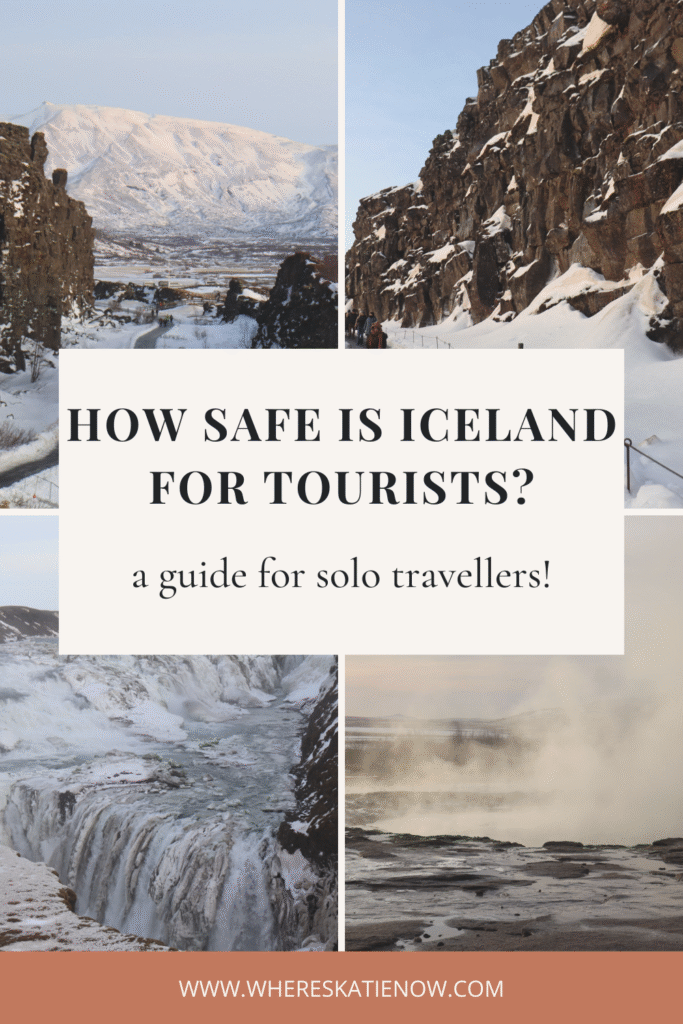

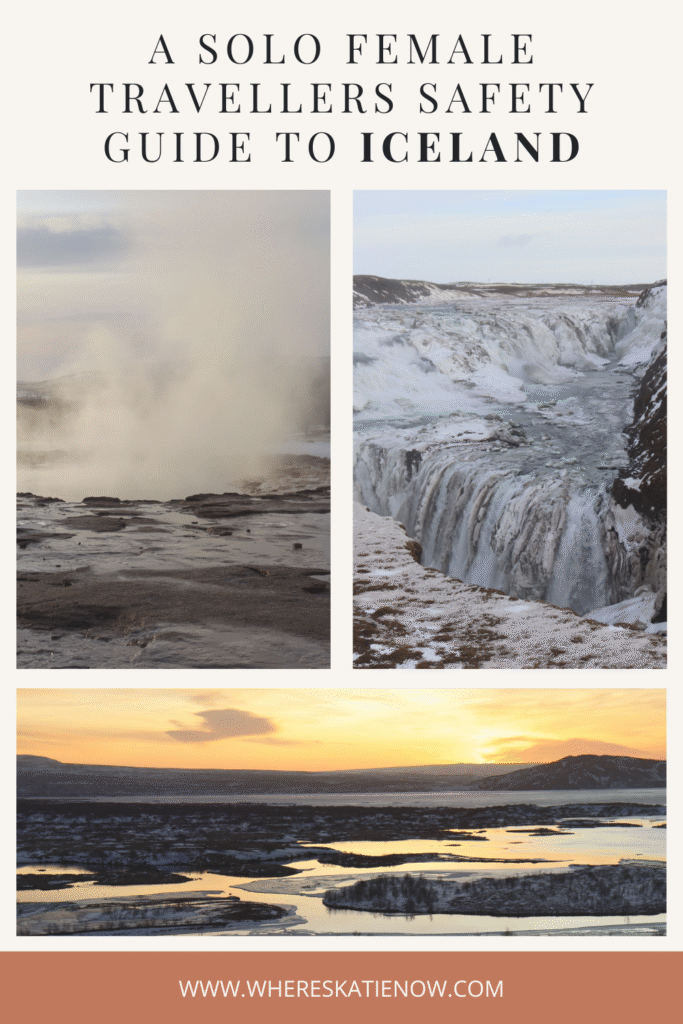

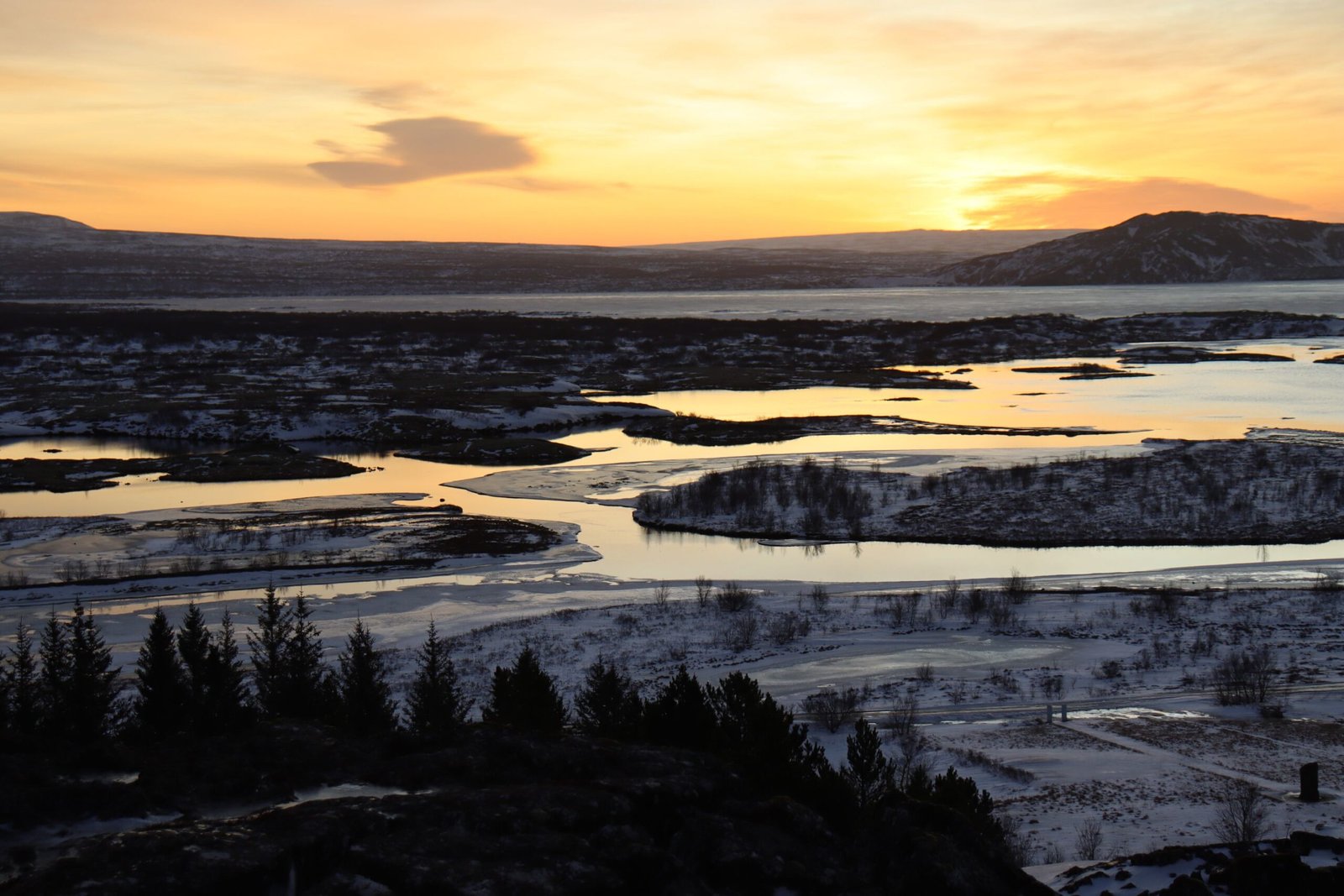
4 Comments